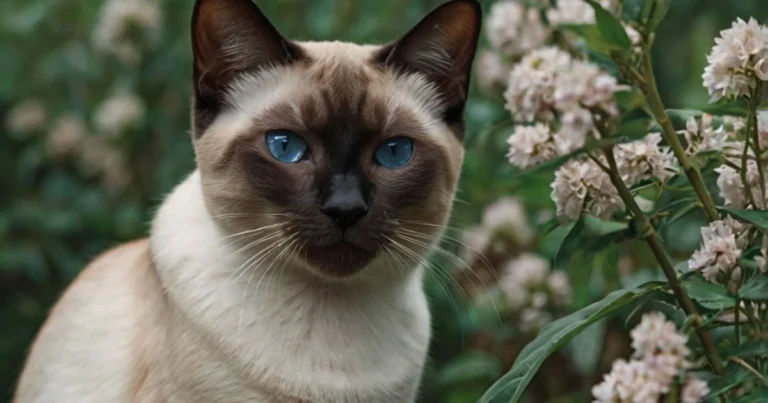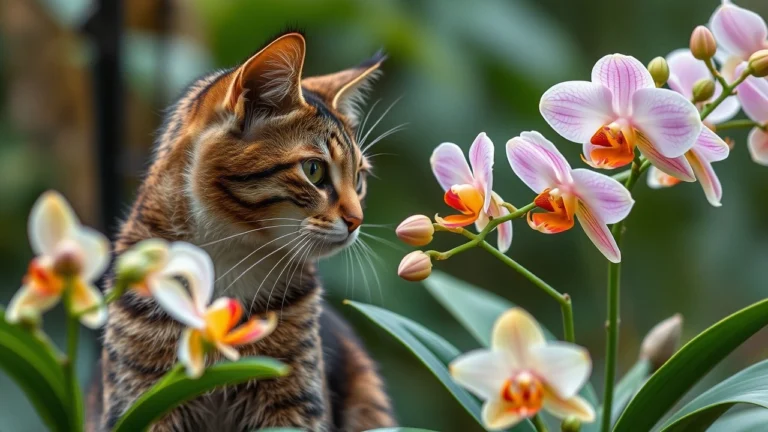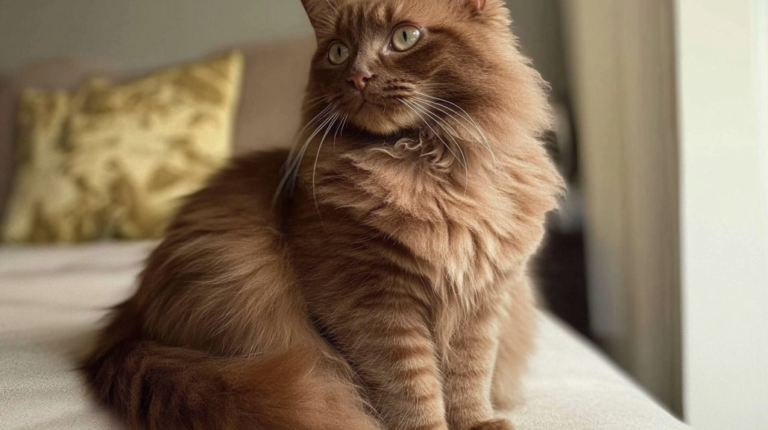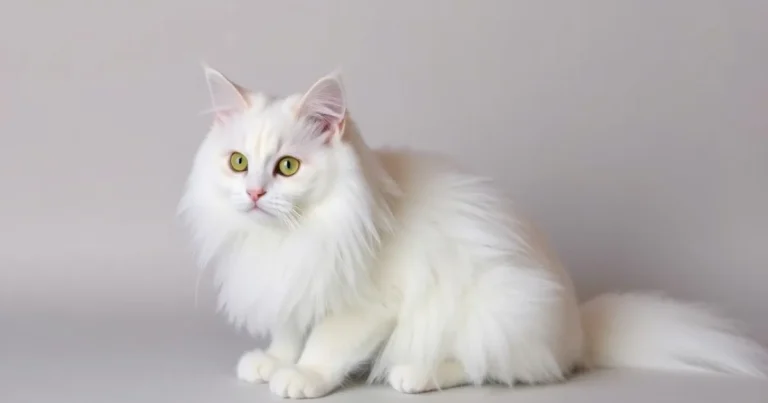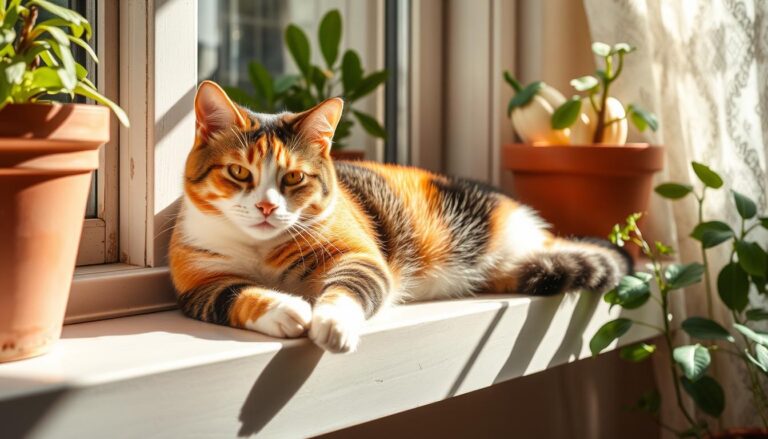Black and White Cat Breeds: 7 Astonishing Perks You’ll Love
Introduction
Have you ever stared into those big cat eyes and wondered what makes Black and White Cat Breeds so special? Maybe you’ve witnessed a tuxedo cat dashing around your living room, or a black-and-white kitty snug on your couch, looking dapper in its dual-toned fur. There’s something almost magical about black and white cats: it’s as if they stepped out of a classic Hollywood film with natural elegance and endless curiosity. Whether you’re a longtime cat parent or simply a feline enthusiast, you’ll find plenty to enjoy in the world of Black and White Cat Breeds.
In this comprehensive guide, we’re going to dive deep into everything you need to know about Black and White Cat Breeds, from the myths surrounding tuxedo cats to the science behind their two-tone coats. We’ll even explore the many health considerations that come into play for these felines, based on expert references. Plus, we’ll answer the biggest questions you’ve always wanted to ask about Black and White Cat Breeds—including whether they’re noisier than other cats, what precisely defines a “tuxedo” pattern, and which breeds are known to showcase these glorious black-and-white coats.
Because this is a significant decision—whether you’re adopting, fostering, or merely curious—we’ve gathered authoritative insights. We’ve analyzed the top 8 competitor articles about Black and White Cat Breeds, picked out the best elements of their outlines, and fine-tuned everything into this single, easy-to-skim resource. You’ll get playful anecdotes, scientific facts, references to reputable organizations like the ASPCA (American Society for the Prevention of Cruelty to Animals), and more. Grab your favorite cup of tea (or catnip toy if you’re reading this out loud to your furry friend), and let’s embark on an adventure into the realm of Black and White Cat Breeds.
What Exactly Are Black and White Cat Breeds?
When we speak of Black and White Cat Breeds, we’re not referring to a single, isolated breed. Instead, we’re talking about cats whose coat patterns feature black and white coloring in a variety of distributions—sometimes symmetrical, sometimes delightfully random. Contrary to popular belief, a “tuxedo cat” is not a breed in itself but rather a coat pattern that can appear in multiple feline families.
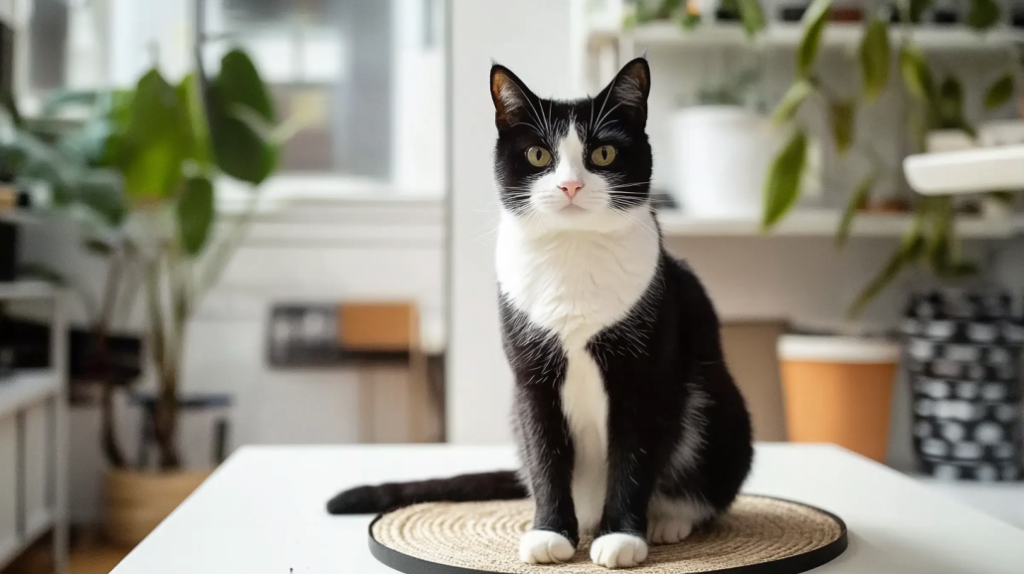
Key Points to Remember:
- Black and White Cat Breeds can be found across various pedigreed lines (e.g., Maine Coon, Persian) and mixed-breed populations.
- Patterns may include the classic tuxedo, cow spots, masks, and more.
- Coat color does not necessarily dictate temperament, but certain breed traits might still be observed (e.g., active Siamese mixes or laid-back Ragdolls with black-and-white coats).
Many cat owners will say that these distinctive black-and-white coats give their pets an air of sophistication—hence the nickname “tuxedo cats” when that color arrangement includes a white chest and paws. If you’ve ever gazed upon a black-and-white cat in a perfectly symmetrical pattern, you know firsthand the allure they carry.
Why Are Black and White Cat Breeds So Popular?
1. A Timeless Aesthetic Appeal
Let’s face it: we’re drawn to Black and White Cat Breeds because they embody elegance and timelessness. From a purely aesthetic point of view, the stark contrast between black fur and white fur creates striking lines that make these felines stand out from the crowd. Many owners report that their black-and-white cats look as though they’re wearing permanent little tuxedos, ready to attend a fancy gala.
2. Myths and Folklore
Black-and-white cats often inspire stories and legends. Some cultures perceive black cats as symbols of luck or misfortune, but when white patches are added to the mix, it often shifts the perception toward fortune and charm. Whether you subscribe to superstition or not, the folklore around Black and White Cat Breeds certainly adds a hint of mystery.
3. Unique Personalities
While every cat is an individual, many fans of Black and White Cat Breeds claim these two-tone felines tend to be:
- Playful and curious
- Quick learners
- Social with their human families
- Adaptable to various environments
Though anecdotal, these observations stem from cat lovers across forums, breed clubs, and social media groups. Ultimately, you might discover your black-and-white kitty is just as likely to be sweet and affectionate as any other cat, but the prevalence of these stories is hard to ignore.
4. Ease of Identification
In multi-cat households or shelters, black-and-white cats are easy to spot. That’s often a big part of why people become smitten with them. Once you lock eyes with a tuxedo cat’s bright white chest or a masked kitty’s half-black, half-white face, it’s hard to turn away.
Common Patterns Within Black and White Cat Breeds (With Table)
Not all Black and White Cat Breeds look the same. In fact, their coats can exhibit several distinct patterns. Below is a table illustrating some of the most common black-and-white coat patterns you might encounter.
| Pattern | Description | Common Breeds |
|---|---|---|
| Tuxedo | Primarily black body, white chest, paws, and sometimes muzzle. | Domestic Shorthair, American Shorthair, and even Persians |
| Cow Spots | Large white areas with black splotches that resemble cow markings. | Mixed-breed cats, Manx, British Shorthair |
| Mask & Mantle | Black “mask” over the face, black back with white underside. | Maine Coon, Ragdoll mixes, Burmese mixes |
| Van Pattern | Mostly white body,with black markings on just the head and tail. | Turkish Van, Domestic Longhair |
| Bicolor | Any arrangement of black and white where neither color is dominant. | Many breed types, from Siamese mixes to Bombay mixes |
As you can see, the tuxedo pattern is just one type of black-and-white coat. From masked marvels to cow-like cuties, each pattern has its own distinct charm. Indeed, Black and White Cat Breeds run the gamut, proving how diverse these two-tone felines can be.
Exploring Popular Black and White Cat Breeds
Though countless black-and-white cats roam the world, certain breeds are especially known for sporting these striking two-tone fur coats. Let’s explore a few:
1. Domestic Shorthair (Tuxedo Variety)
Black and White Cat Breeds often appear in the Domestic Shorthair category. In fact, the Domestic Shorthair is not a single breed but a catch-all term for cats with short fur of mixed or uncertain ancestry. They can carry the gene for black-and-white coats quite frequently.
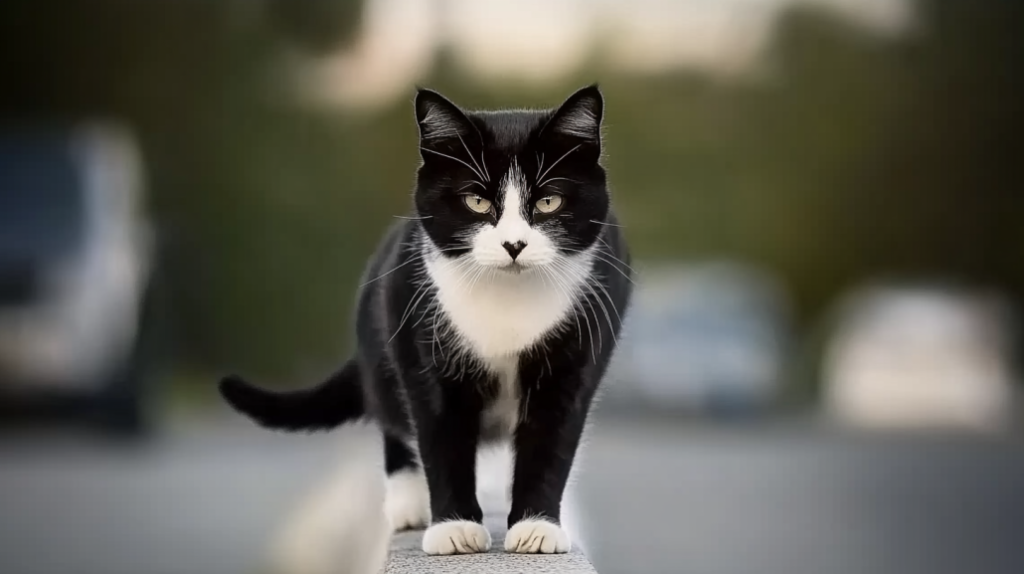
- Temperament: Generally friendly, adaptable, and low maintenance.
- Health: Known for robust health due to genetic diversity.
- Fun Fact: Many shelter cats that are black and white are labeled as Domestic Shorthairs, making them widely available for adoption.
2. Maine Coon
The gentle giant of the cat world, Maine Coons can come in a variety of colors, including black-and-white patterns. They often have thick, luxurious coats with distinctive tufted ears.
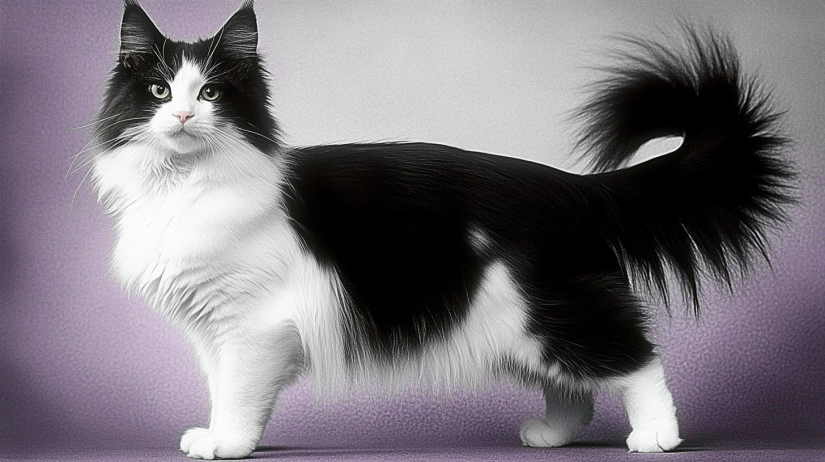
- Temperament: Friendly, sociable, playful.
- Health: May be predisposed to hip dysplasia and cardiomyopathy, so regular vet checks are crucial.
- Why Black and White?: Their large frames beautifully showcase black-and-white markings, adding to their already majestic appearance.
3. Persian
Renowned for their plush coats and sweet demeanor, Persians may also appear in black and white. Persians are known for their flat faces, wide-set eyes, and relaxed personalities.
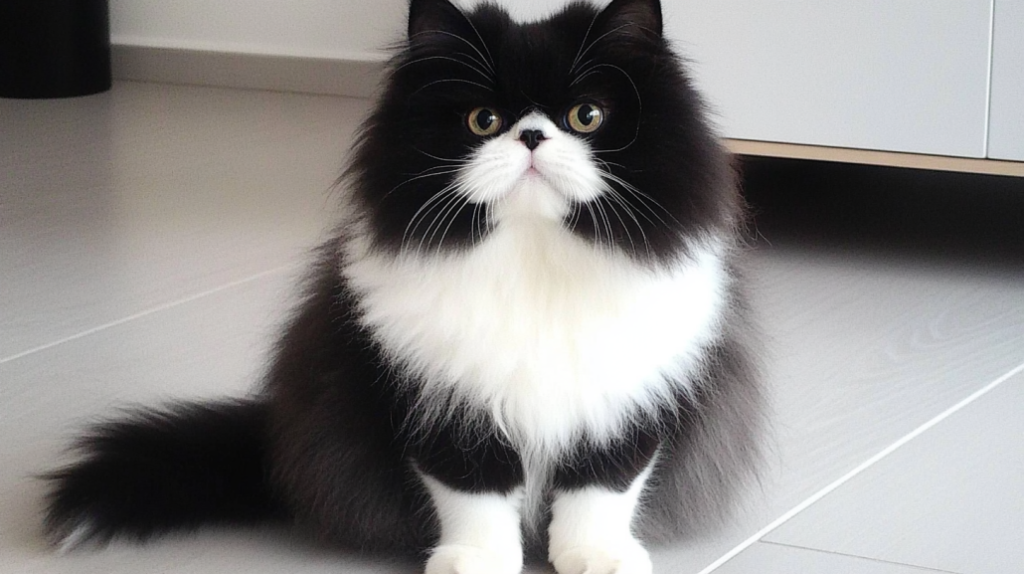
- Temperament: Calm and often a bit reserved, perfect for quieter households.
- Grooming: High-maintenance because of their long fur—daily brushing is recommended.
- Black-and-White Appeal: A Persian’s luxurious coat in black and white creates an eye-catching contrast.
4. British Shorthair
With a round face and plush, dense fur, British Shorthairs can sometimes sport black-and-white coats that give them a stately presence.
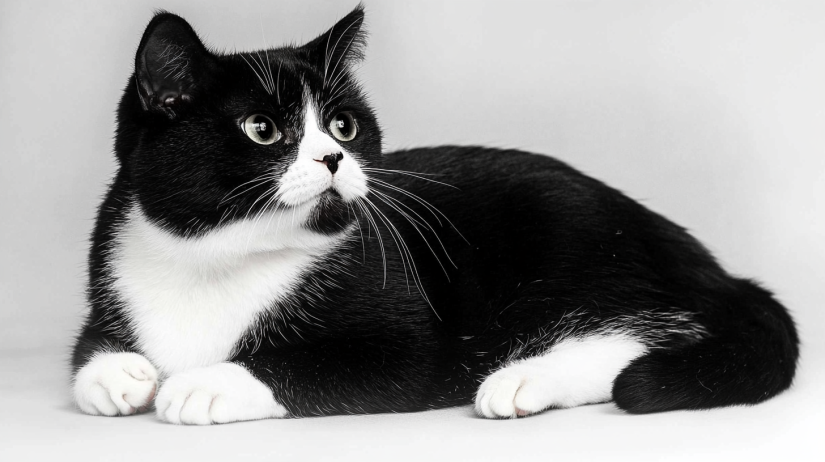
- Temperament: Relatively calm, affectionate, but not overly clingy.
- Health: Generally healthy but can be prone to obesity if overfed.
- Standout Feature: Their classic round cheeks and sturdy build look extra charming in bicolor patterns.
5. Manx
Manx cats are famous for their shortened or completely absent tails. They can come in many colors, including black and white. Their bodies are robust and muscular, giving them a strong, somewhat rabbit-like gait.
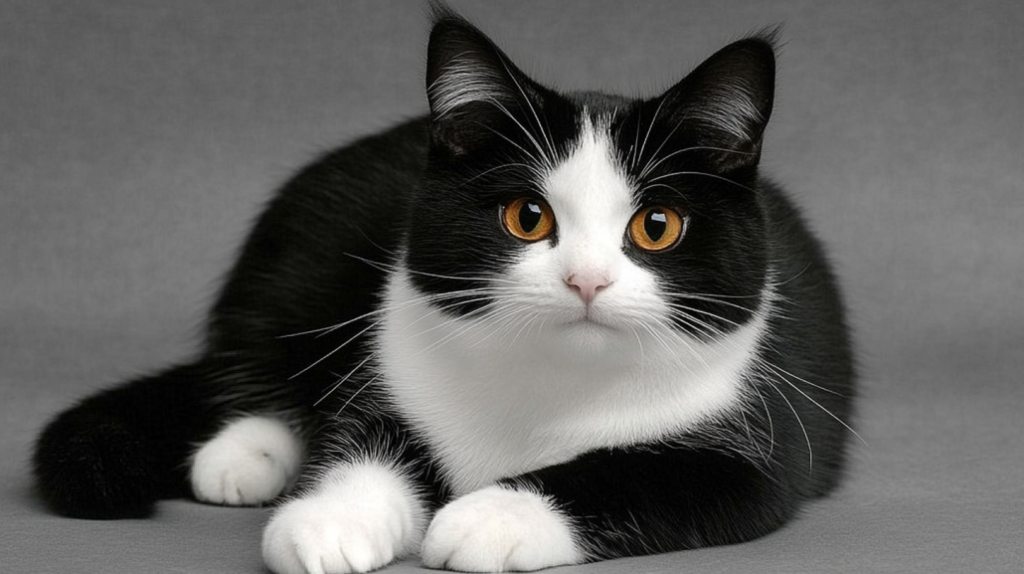
- Temperament: Loyal, playful, and may develop dog-like attachments to their owners.
- Tail or No Tail?: Some Manx cats have a short stump (called a “rumpy riser”) while others have no tail at all (“rumpy”).
- Reason to Love: Their black-and-white coloring makes their unique silhouette even more noticeable.
6. Ragdoll (in Mixed Varieties)
Though the traditional Ragdoll is famous for its pointed coat (with color on the face, ears, paws, and tail), occasional mixed Ragdolls or other line variations can display black-and-white coats.
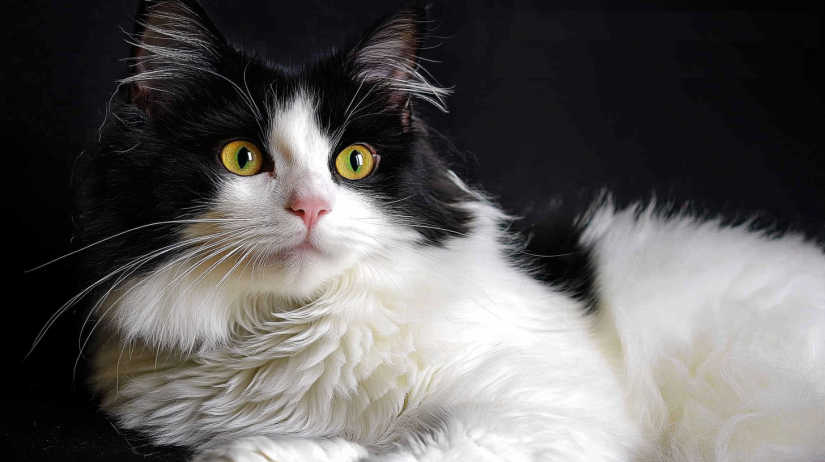
- Temperament: Affectionate, calm, known for going limp when picked up—hence the name “Ragdoll.”
- Health: Watch out for hypertrophic cardiomyopathy. Regular vet check-ups are key.
- Black and White Variety?: More likely in a Ragdoll mix than in purebred lines, but still a show-stopping combo.
7. Sphynx (Rare Bicolor Patterns)
Although Sphynx cats are often associated with being hairless or having minimal fuzz, some can display black and white patches on their skin. Yes, it’s not fur, but the color pattern can still be black and white.
- Temperament: Active, mischievous, and exceptionally people-oriented.
- Skin Care: Regular baths needed because their skin gets oily without fur to absorb it.
- A Unique Twist: Seeing a hairless cat in black-and-white patches is quite a memorable sight!
With so many Black and White Cat Breeds out there, no wonder people can’t get enough of these two-tone darlings.
Health Considerations for Black and White Cat Breeds
While there’s no universal health issue specific only to Black and White Cat Breeds, each breed mentioned has its own set of genetic predispositions. According to the ASPCA and other veterinary experts:
- Regular Check-Ups
Whether your cat is a purebred Persian or a mixed Domestic Shorthair, schedule annual or biannual vet visits. Early detection of issues like heart disease, dental problems, and obesity is essential. - Grooming Needs
- Short-haired black and white cats typically require less grooming.
- Long-haired variations (like Persians) may need daily brushing to prevent mats.
- Obesity Management
Black-and-white cats, just like any cat, can become overweight without a balanced diet. Obesity can lead to joint issues, diabetes, and other health risks. Working with a vet to establish a weight management plan is key. - Sun Protection for White Patches
Cats with white fur can be more susceptible to sunburn on their ears and nose. If your black-and-white kitty loves sunbathing, consider pet-safe sun protection or limit time in direct sunlight. - Overall Care
A balanced diet, fresh water, regular exercise, mental enrichment (toys, climbing structures, puzzle feeders), and a stress-free environment help keep Black and White Cat Breeds in peak condition.
Behavioral Traits and Myths
Myth 1: Black-and-White Cats Are Unlucky or Lucky
Depending on the culture, black cats are harbingers of misfortune, while in others they are omens of good fortune. The addition of white often changes that narrative entirely, with many people believing black-and-white cats bring harmony. Although there’s no scientific evidence to support either claim, the story continues in folklore.
Myth 2: They’re More Vocal
While some owners insist Black and White Cat Breeds meow or chirp more, there’s no direct link between coat color and vocalization. Vocal tendencies typically stem from breed characteristics or individual personality traits.
Myth 3: All Tuxedo Cats Are Male
Not true! Tuxedo is a pattern, not a gender-based trait. Female cats can—and often do—have that distinguished tuxedo coloring.
Real-Life Experiences
Many cat parents testify that black-and-white cats are extremely affectionate, especially if they’ve been socialized well as kittens. That said, keep in mind every cat is unique. If your black-and-white cat loves to chat at 3 a.m., it’s probably just part of its individual charm!
Caring for Your Black and White Cat Breeds at Home
If you’ve already welcomed a two-tone feline into your family or are considering adoption, here are practical tips to ensure a happy, healthy life together.
- Create a Safe Space
- Offer a cozy cat bed, soft blankets, and quiet nooks.
- Use scratching posts and cat trees to channel their energy and protect your furniture.
- Balanced Nutrition
- Consult with your vet about the best food for your cat’s life stage and any breed-specific needs.
- Watch portion sizes to prevent obesity.
- Playtime & Enrichment
- Black and White Cat Breeds often love interactive toys, feather teasers, and puzzle feeders.
- At least 15-20 minutes of active play per day can stave off boredom.
- Grooming Routine
- Regular brushing helps reduce hairballs and keeps fur looking sleek (for cats with fur!).
- Bathing might be optional for some short-haired breeds but crucial for hairless varieties like the Sphynx.
- Socialization
- Early and consistent socialization fosters a confident, friendly cat.
- Encourage gentle handling; reward calm behavior with treats.
- Routine Veterinary Care
- Vaccinations, flea and tick prevention, and annual check-ups are non-negotiable.
- If your cat’s breed is predisposed to certain conditions, schedule screenings as advised by your vet.
These steps might appear straightforward, but they can greatly improve your cat’s quality of life and strengthen your bond.
Mini Call to Action (CTA)
Ready for a deeper dive into cat care techniques? Check out [INTERNAL LINK 3] for more expert tips to keep your Black and White Cat Breeds purring with happiness. Whether you’ve adopted a tuxedo kitty or a cow-spotted charmer, the next phase of your cat parenting journey awaits!
Frequently Asked Questions (FAQs)
Below are some of the most common questions about Black and White Cat Breeds.
Are tuxedo cats an official breed?
Tuxedo cats are not a separate breed but belong to Black and White Cat Breeds with that distinctive pattern. They can appear in many breeds, from Domestic Shorthairs to Persians. A cat’s coat color by itself does not define its breed.
Which cats usually come in black and white?
Many Black and White Cat Breeds come in diverse patterns like tuxedo or cow spots. These include Domestic Shorthairs, Maine Coons, and even Persians. It’s all about genetics rather than a single breed.
Do black and white cats meow more than others?
Black and White Cat Breeds don’t inherently meow more because of their coat color. Any vocal traits usually come from breed heritage or individual personality. There’s no proven link between fur color and noise levels.
Are there personality traits specific to black and white cats?
Black and White Cat Breeds are known for outgoing and friendly behaviors, but each cat is unique. There’s no universal personality trait linked solely to coat color. Most differences come from a cat’s environment and genetic makeup.
Do recognized breeds include black and white cats?
Yes, many recognized Black and White Cat Breeds exist, such as Persians and British Shorthairs. Multiple purebreds can showcase this bicolor pattern. It depends on the breed’s genetic lines.
How do I groom a long-haired black and white cat?
Long-haired Black and White Cat Breeds require regular brushing to prevent matting. White fur can stain easily, so gentle spot cleaning might help. Always use cat-safe tools and products for the best results.
Do black and white cats get sunburned?
Black and White Cat Breeds with white patches are more prone to sunburn on ears and noses. Limit direct sun exposure and consider vet-approved pet sunscreen. Preventive care reduces the risk of skin damage.
How do I find bicolor cats for adoption?
Local shelters often have Black and White Cat Breeds ready for loving homes. Rescue organizations and pet adoption websites also feature these two-tone darlings. Always meet potential pets in person before adopting.
Conclusion
Black and White Cat Breeds are truly something special. From tuxedos that look like they’re permanently dressed for a party to the more random, playful cow-spotted cats, these felines captivate us with their bold contrasts and fun-loving personalities. While their coat color alone doesn’t dictate their entire identity, it certainly adds a dash of flair and excitement to life with a black-and-white companion.
Wherever you are in your pet journey—whether you’re an experienced cat parent, a first-time adopter, or someone who simply adores these two-tone beauties—remember that each black-and-white cat has a unique story. Taking the time to understand their breed traits, meet their health needs, and shower them with love will ensure you enjoy a fulfilling and lasting bond. Share your own experiences with Black and White Cat Breeds in the comments and pass along this resource to anyone who might be curious about these eye-catching kitties!


